Straddling the Irish Sea
Our time in Ireland was wrapping up but we still had a couple of must-see items on our list before catching our ferry back to Wales. The first was the impressive Kilkenny Castle which for 800 years in its various iterations has been the centre of power and wealth in this part of Ireland. In addition to the magnificent rooms with their high ceilings, period furniture and fab wall hangings the castle was in top condition and sported stunning gardens in the front and back. We’re castle experts now and we can tell a first class winner straight away.
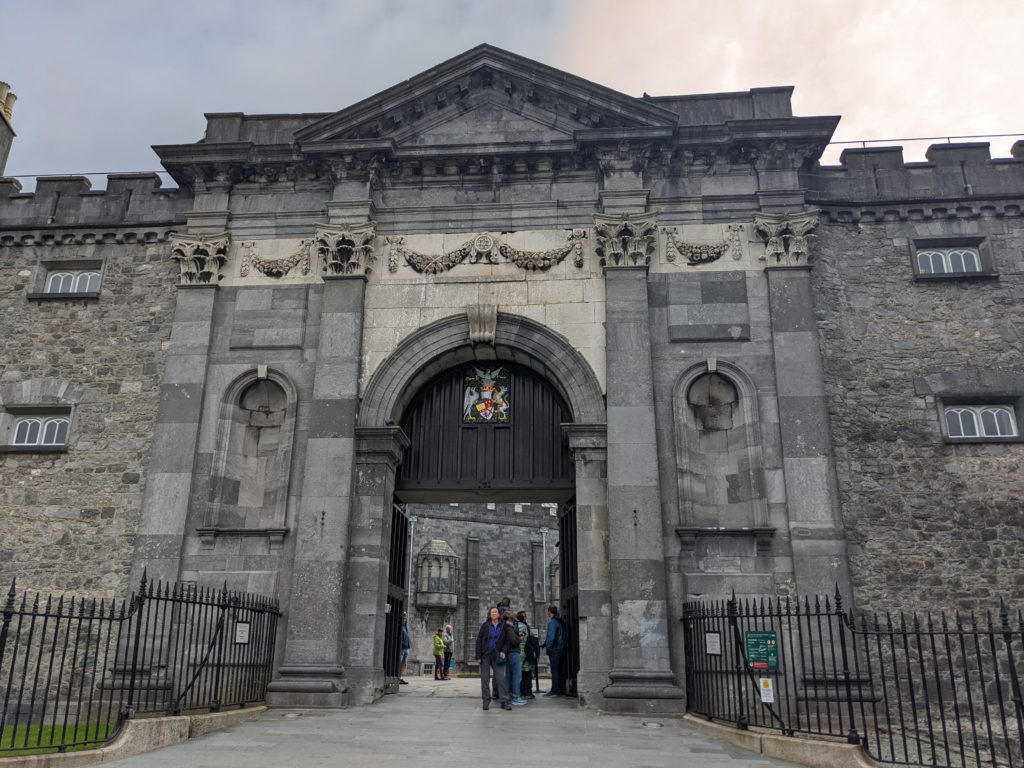
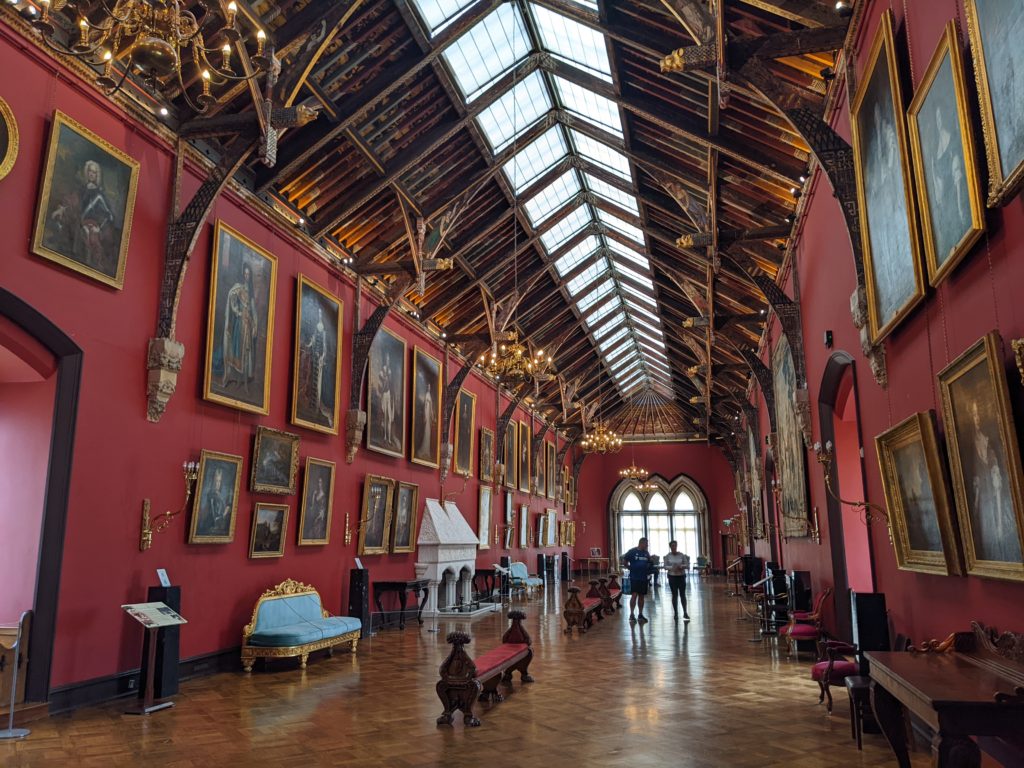
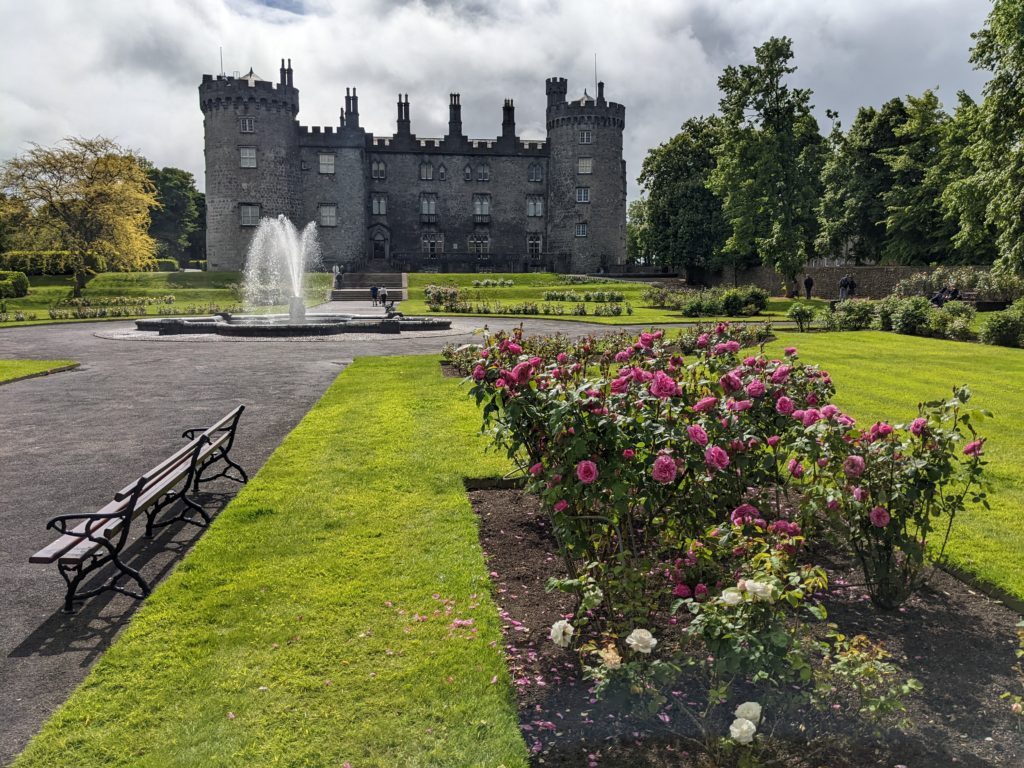
The absolute last place on our imaginary list of places to visit is Wicklow Mountains National Park, the sixth and last of the national parks we’ve visited here. Wicklow Mountains is a vast protected area just south of Dublin which features the Irish rendition of steep mountains mixed in with glacial lakes, forests and magic rocky rivers flowing down between and amongst them all.
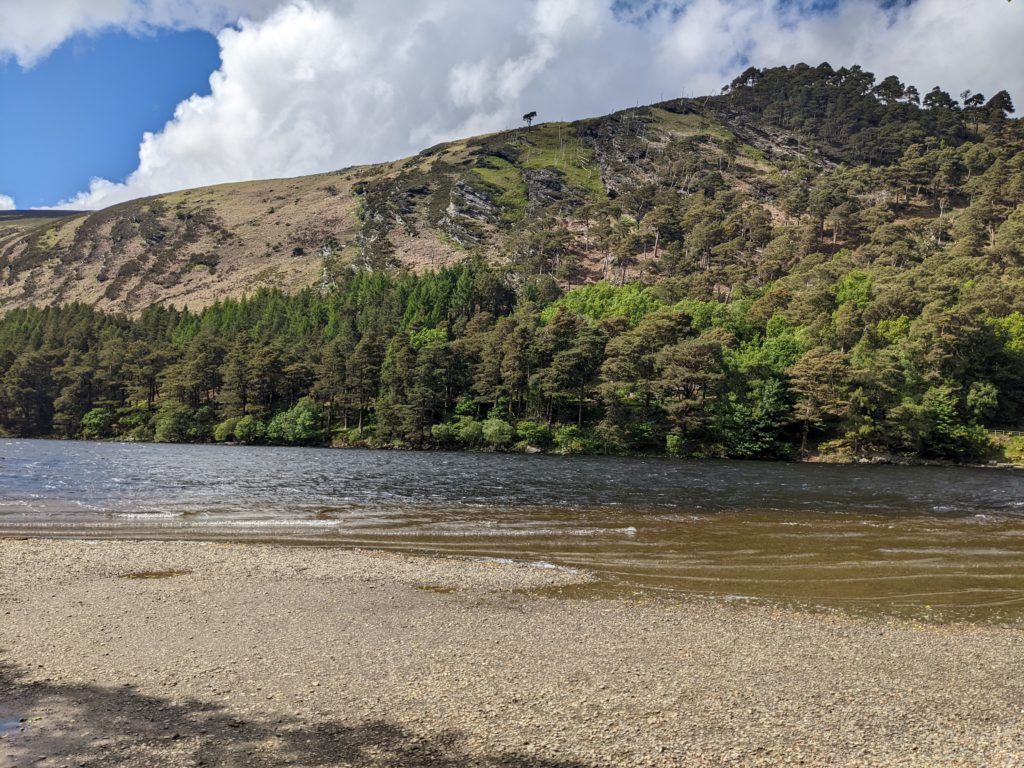
We chose to do a couple of walks from the Visitor Centre at Glendalough which incorporated the Upper and Lower Lakes and the ancient monastery site. The Upper Lake in particular is wedged in between mountain walls sloping steeply into the cold clear lake. The setting would have been right at home in Alaska or Canada but such is Ireland that just when you think you’ve seen it all something completely new and magnificent jumps up at you.
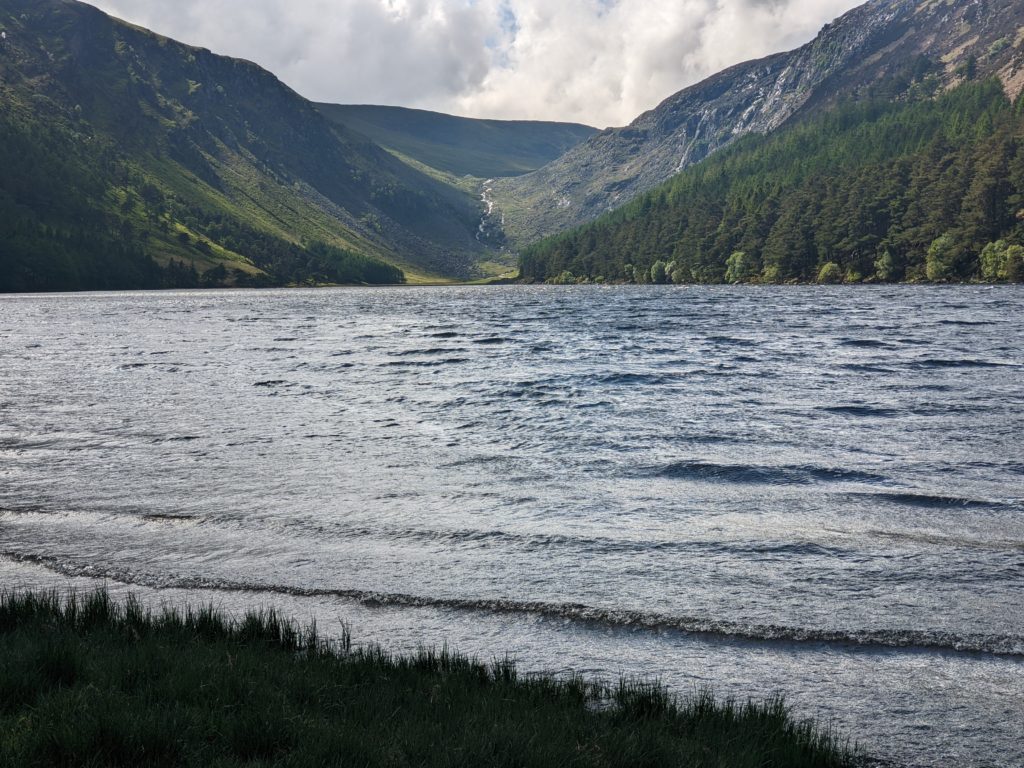
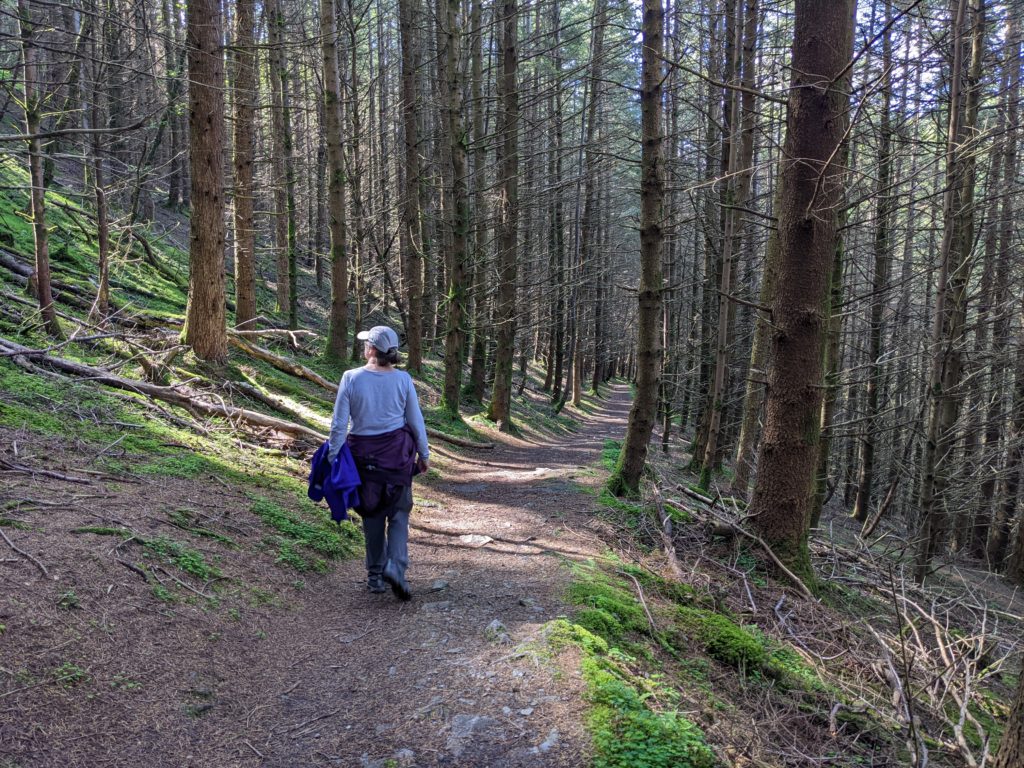
The monastic city, as it’s called, was home to a Christian commune of sorts led by St. Kevin starting from the 7th century and lasting for almost 500 years. Many of the remaining structures date back to those days and they enjoy a tranquil setting amongst the forests and mountains.
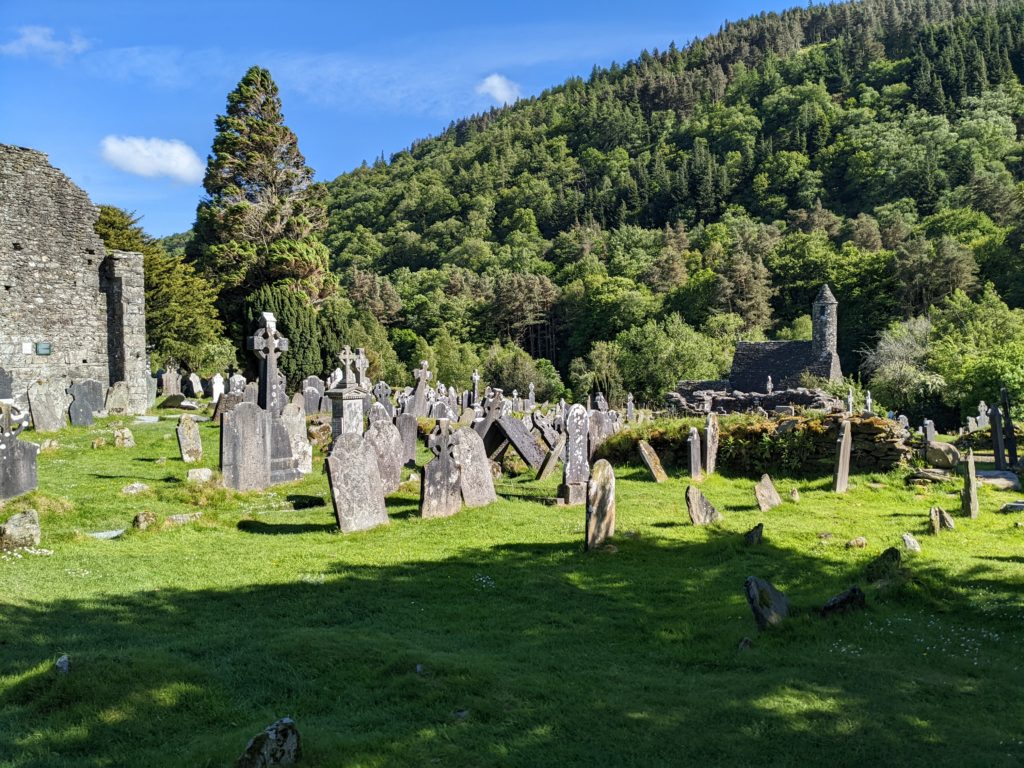
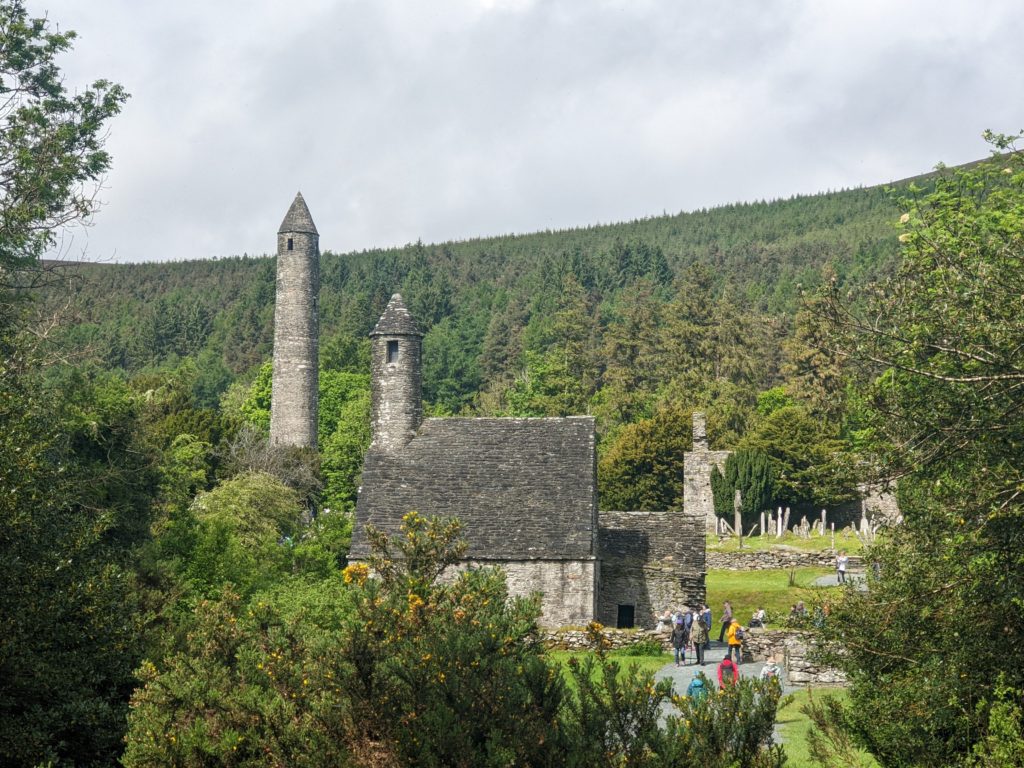
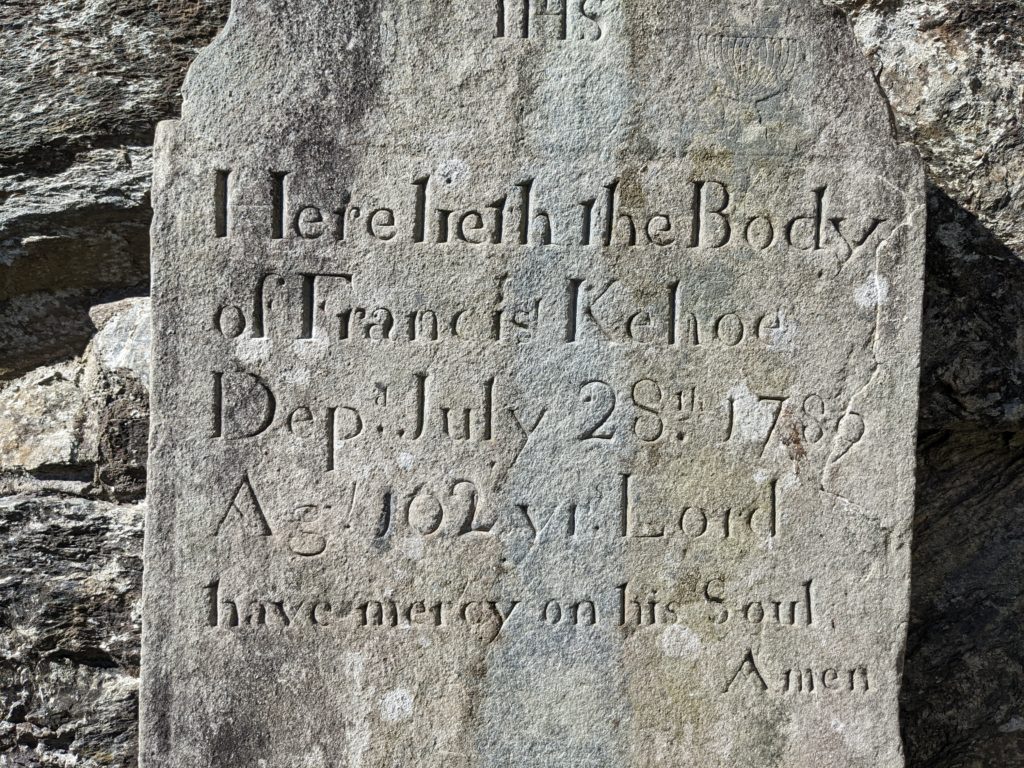
The next day we made a rather contorted around-about journey to the Dublin port via the scenic Wicklow Gap and the stunningly beautiful Sally Gap, both in the national park. This area of the park is boundless open rolling mountains covered in heath, gorse and peat, not a tree on the horizon, a bit of blue sky even to top it off. We talked to some fellow travellers at one of the viewpoints who described this open heathland as ‘ugly’ but we thought just the opposite. I guess beauty is in the eye of the beholder.
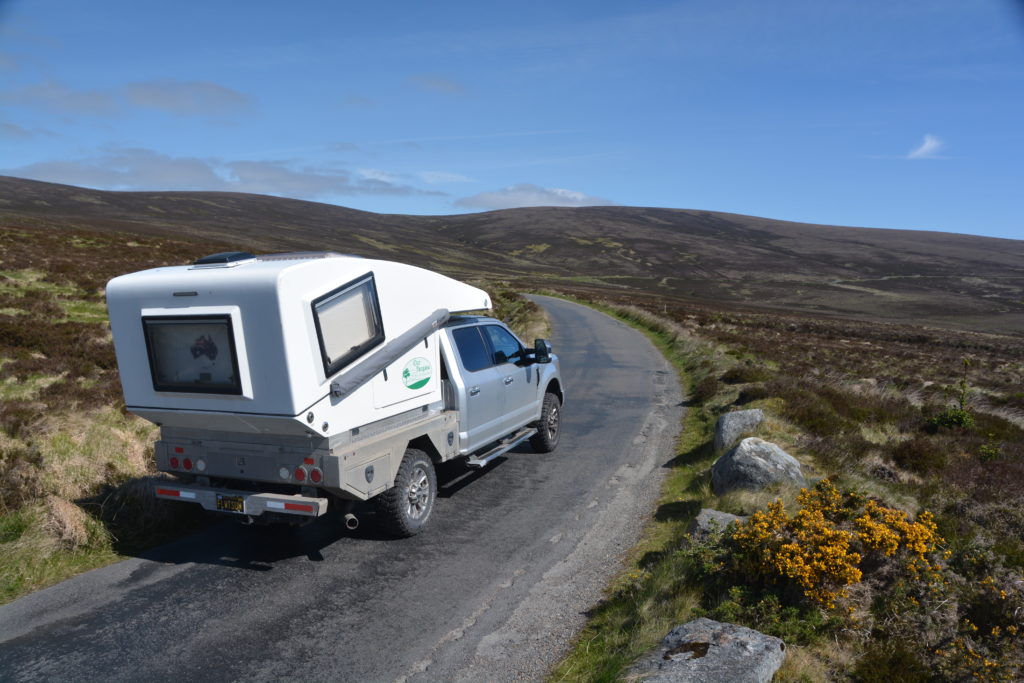
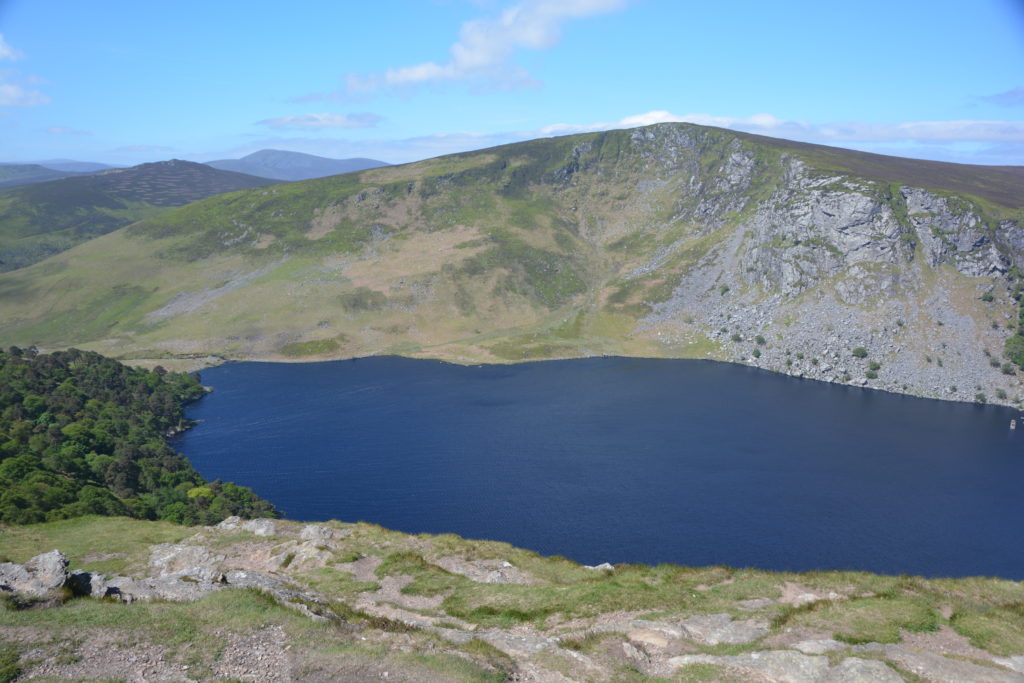
Tramp had been a little hesitant to start recently and I feared a worn-out battery might be the issue but in the nearby town of Bray we had the battery and alternator tested, both all good. Just a little cleaning of the connections and he was purring again like a newborn.
The ferry crossing from Dublin to Holyhead in Wales went very smoothly and before we knew it we had left the European Union and were back into the recently Brexited United Kingdom. And we passed through this major border crossing, the subject of much angst between the UK and EU, without talking to a single official on either side, no showing of passports, no Customs, no worries about Tramp, nothing. It’s as if Brexit never happened, or they wish it hadn’t.
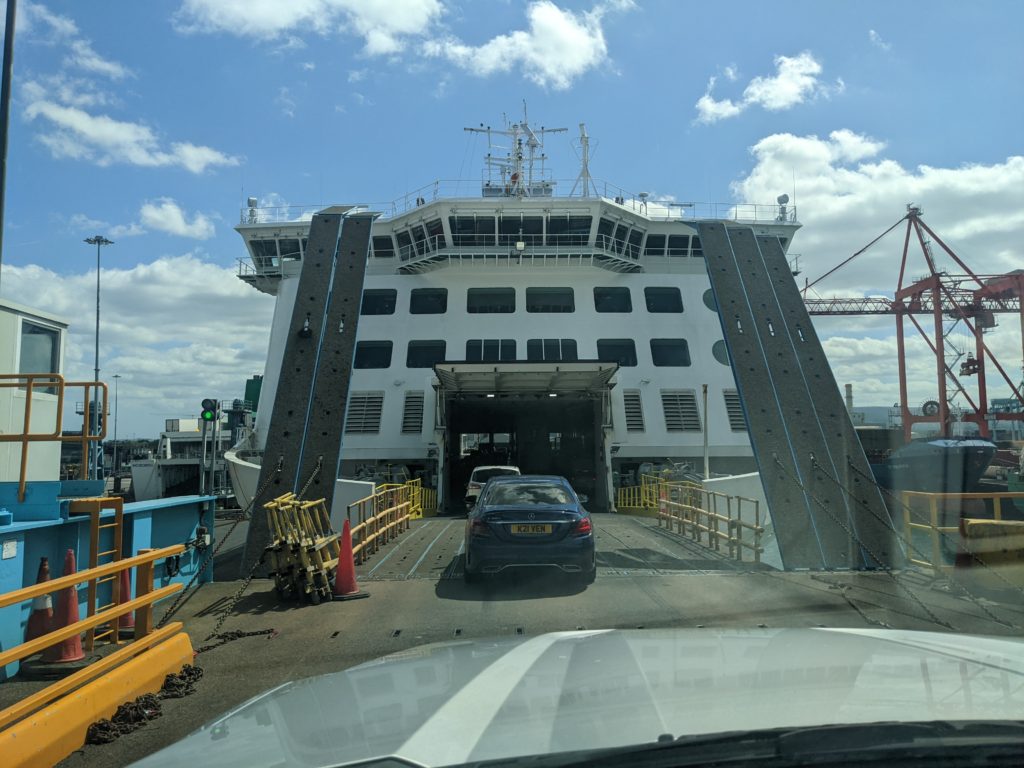
We’ve been formulating our plan for the next few weeks and it all fell into place perfectly. Our friends Gavin and Emma, who live down in Essex and own a camper the exact same as ours (more on that later), had liked our suggestion they join us for a bit of exploring in Scotland. We agreed to meet in Fort William in the centre of Scotland in a few days which allowed us time to jet up north and explore a few places before they arrive.
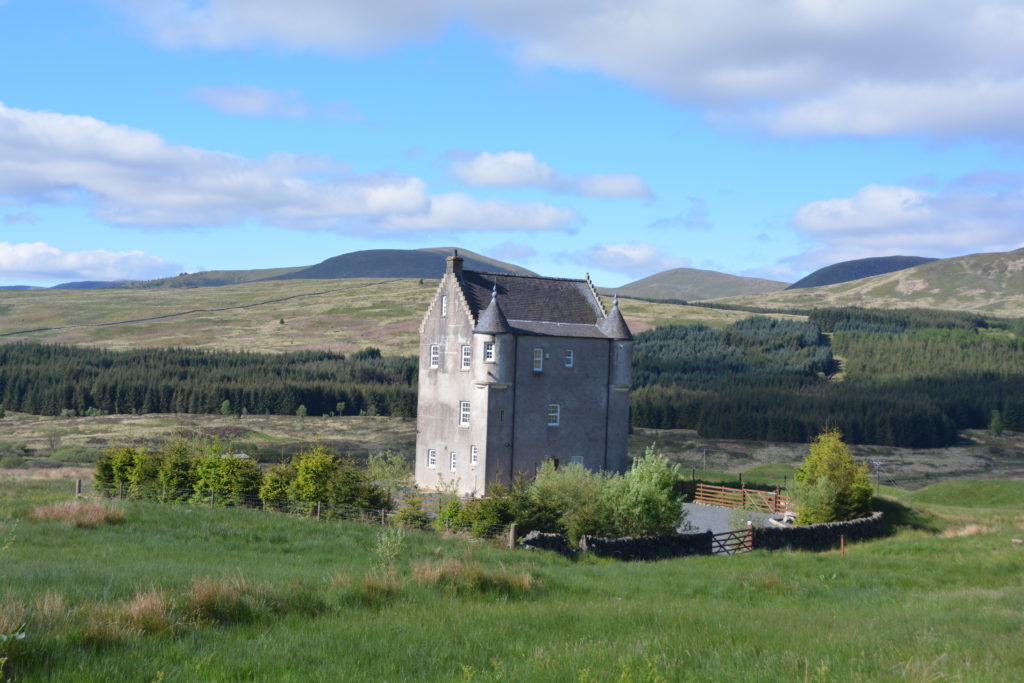
And so it came to be that we had a dreaded long distance travel day, using England’s excellent motorways and gobbling up some serious miles. Not fun but essential. But there’s a twist to it all, of course. The Queen’s Jubilee week – celebrating her 70 years on the throne – of holiday and celebrations was beginning the same day and we soon entered the crowded slipstream of English families heading north for their biggest holiday period of the year. It is an unmeasurable cultural experience to pull into one of the country’s huge service centres off their motorways with literally thousands of other travellers just so you can use the toilets and have a picnic lunch.
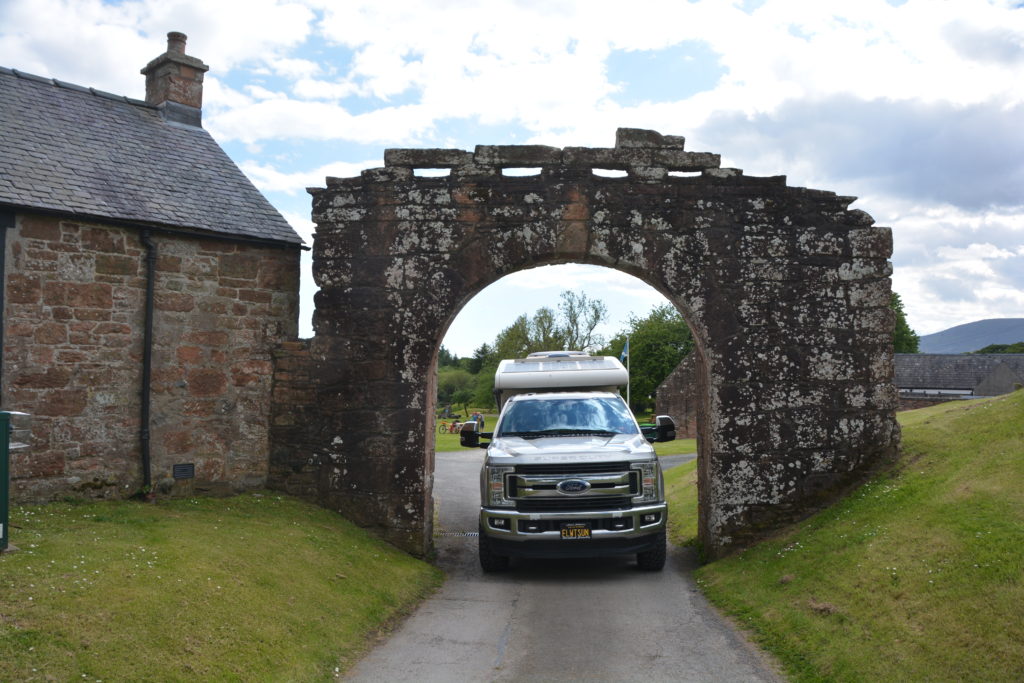
But the border to Scotland soon passed under Tramp’s wheels and with that a chance to slow down and get stuck into this new culture. Our first stop, of course, was a 13th century castle, named the Caerlaverock Castle on the River Nith. Nicely intact and still sitting proud amongst the forest, the castle featured a triangular shape with a tower in each of the three corners and an impressive moat around the outside. This was a new and impressive twist on all the medieval castles we had seen in Ireland.
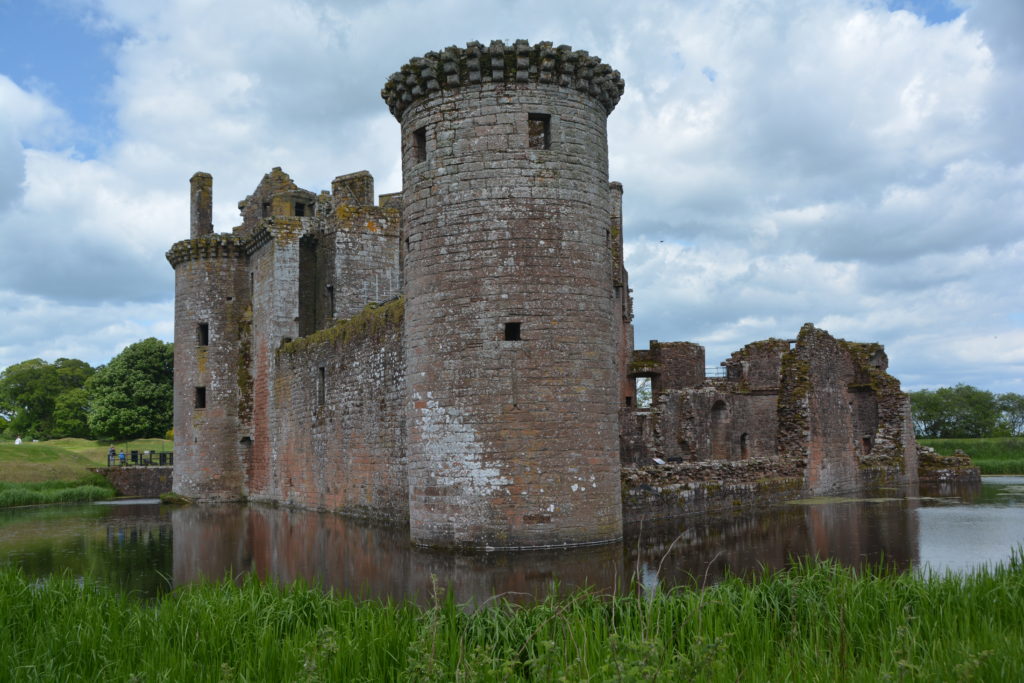
We passed the night in a quiet forest near Loch Ken deep in the bowels of southern Scotland and the next day continued our slow drive north to Fort William. But we had had enough of the motorways and instead headed for the first ferry terminal and caught the last standby spot over to the lovely Isle of Arran, a favourite holiday spot for the burned-out Scots.
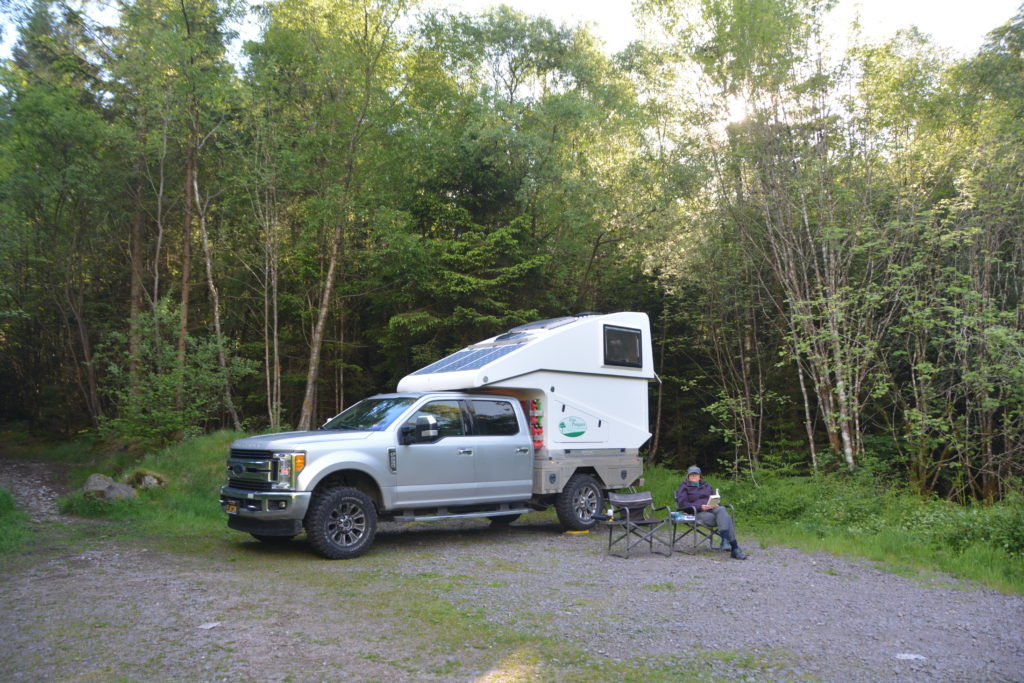
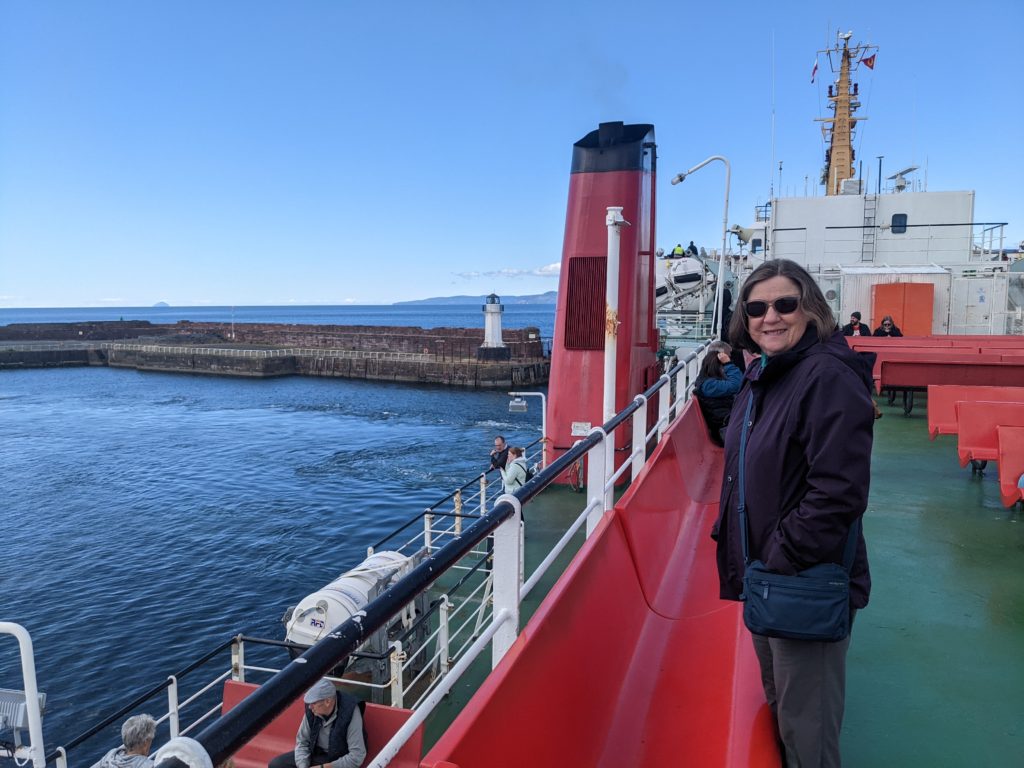
We landed at Brodick, a fun little holiday town on a protected bay, and drove along the coast through little communities and then over the mountains to Lochranza on the other side of the island. We were reluctant to leave Arran, it clearly had more to offer, but we were on a mission and caught another ferry to Claonaig on the Mull of Kintyre.
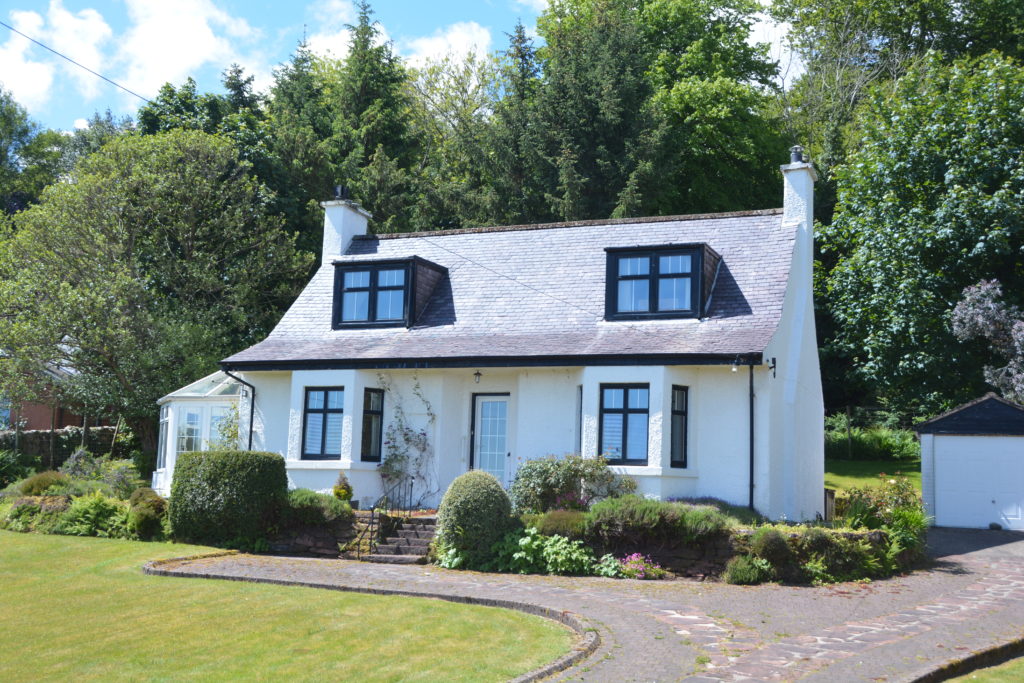
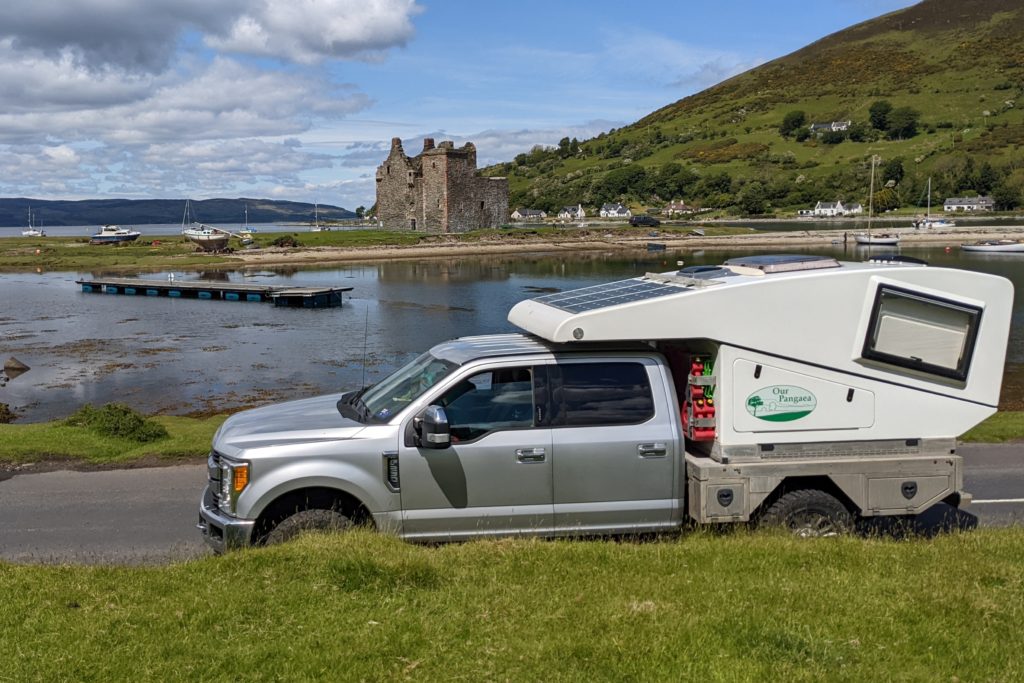
The Mull of Kintyre is a long and thin strip of land protruding into the Irish Sea, almost as if it wanted to reach out and connect with Northern Ireland, where we had been a few weeks before. Unlike the Isle of Arran, the Kintyre was not a holiday destination at all, it was a scarcely populated land with stretching sheep and cattle spreads, a jagged coastline and rocky mountain tops. The only community was the town of Campbelltown near the end of the peninsula, not exactly handsome or colourful or seductive but it did have a lively port.
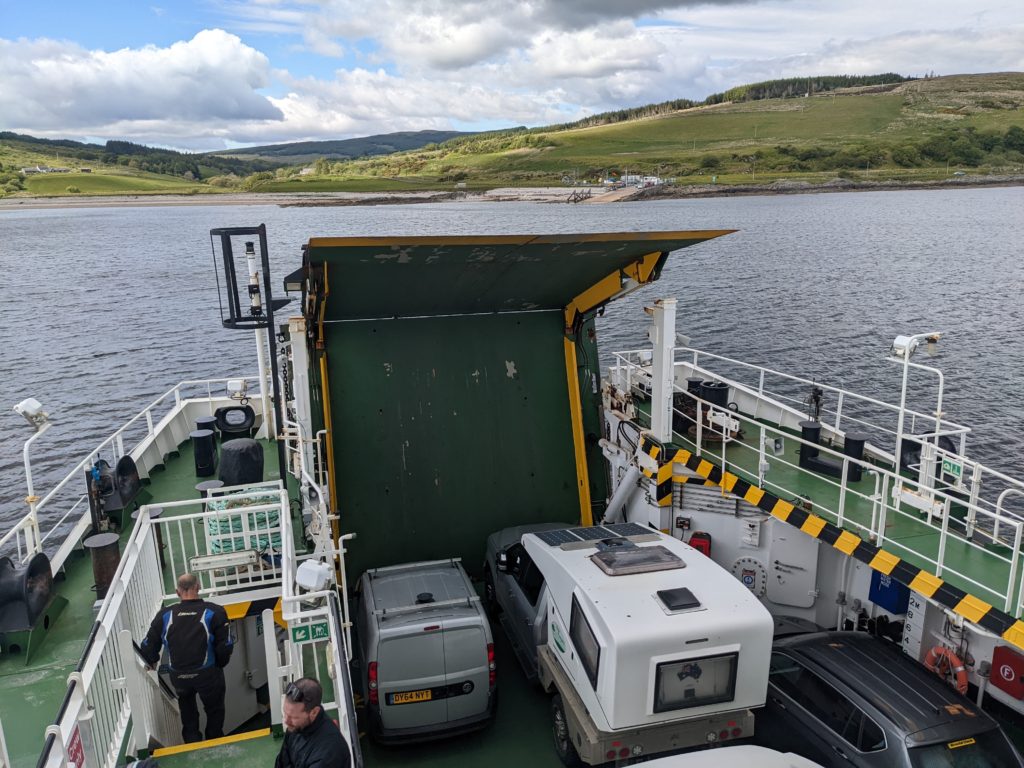
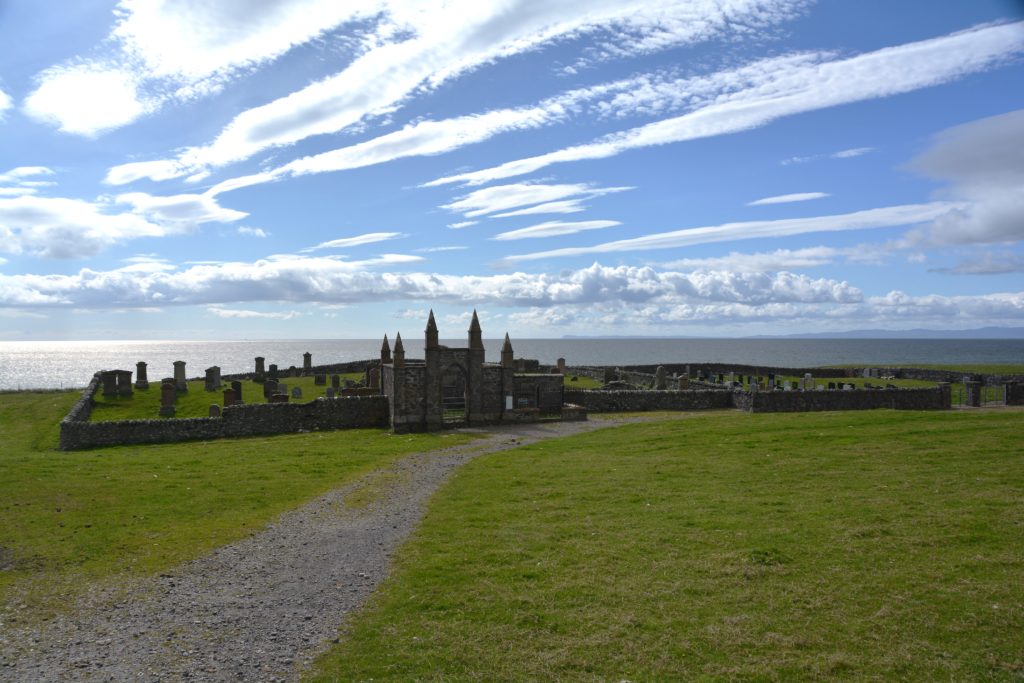
We finished the loop of the peninsula by following the winding one lane road up the eastern side and checked into a campground near the town of Tarbert. So far Scotland had wowed us with it’s wonderful scenery, interesting geography and blue skies.
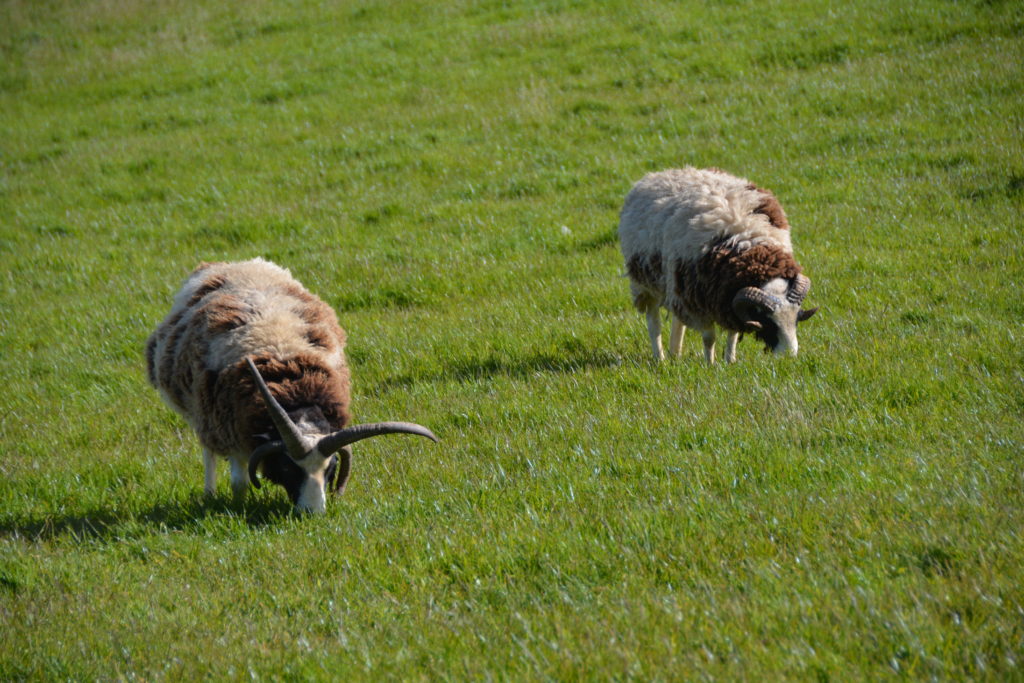
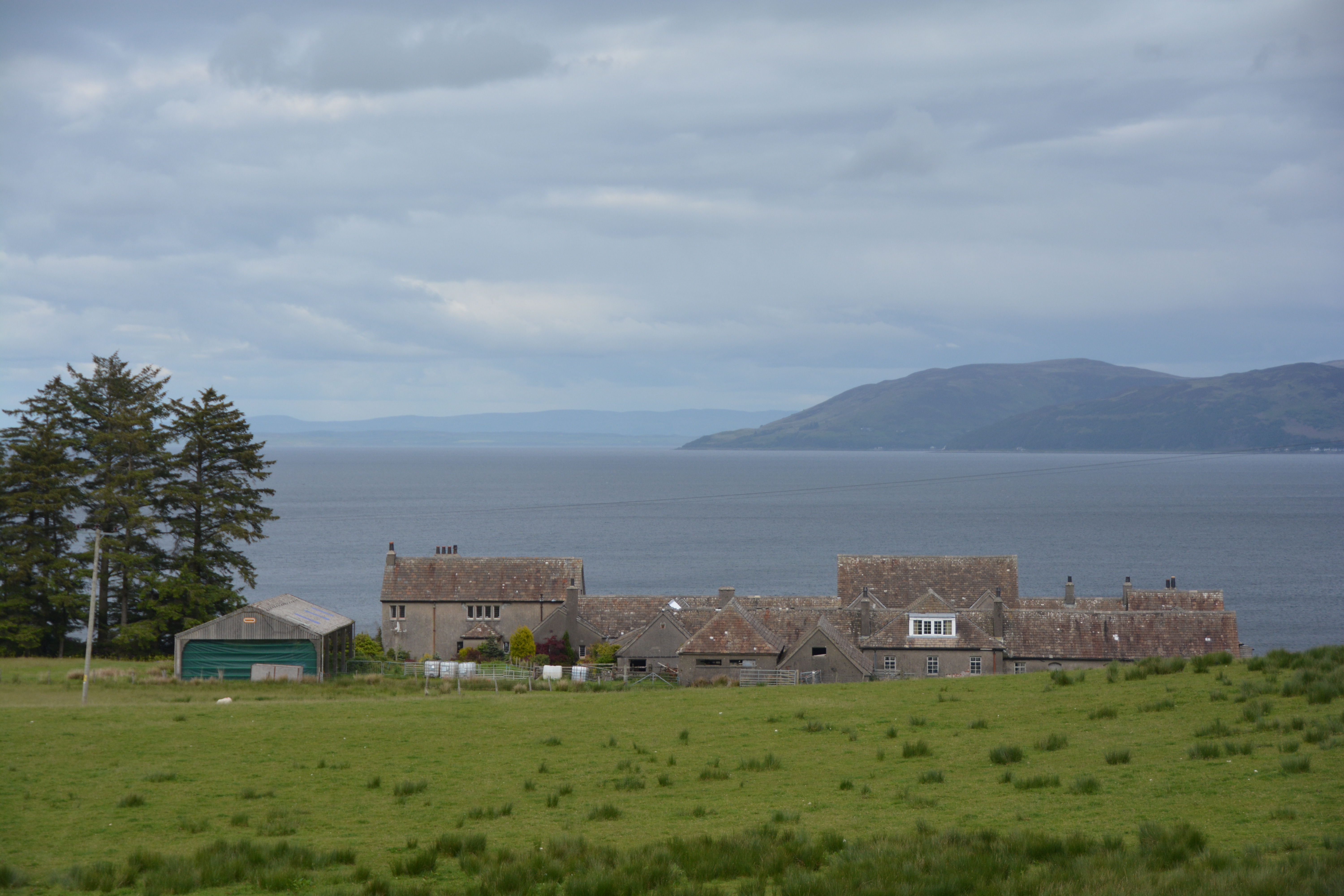
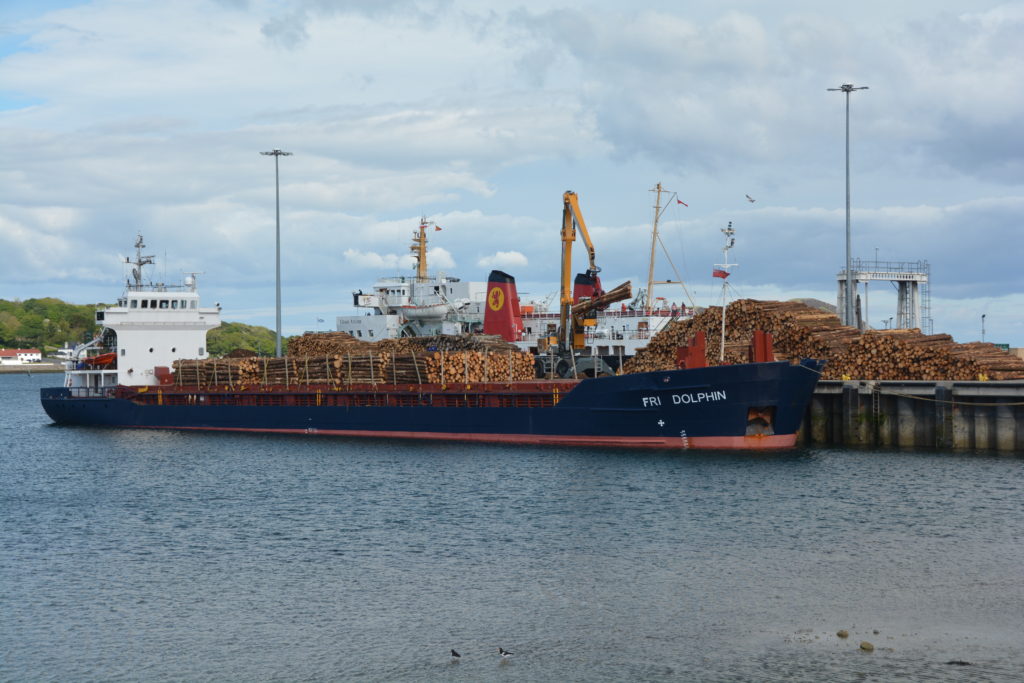
But our trip was about to take on a whole new dimension – travelling with other people. We had only done this once before when we travelled with our daughter Anna, her husband Carl and our baby granddaughter Abby in Denmark and Norway four years ago. We were soon to team up with Gavin and Emma and explore the Scottish highlands together. Can’t wait!
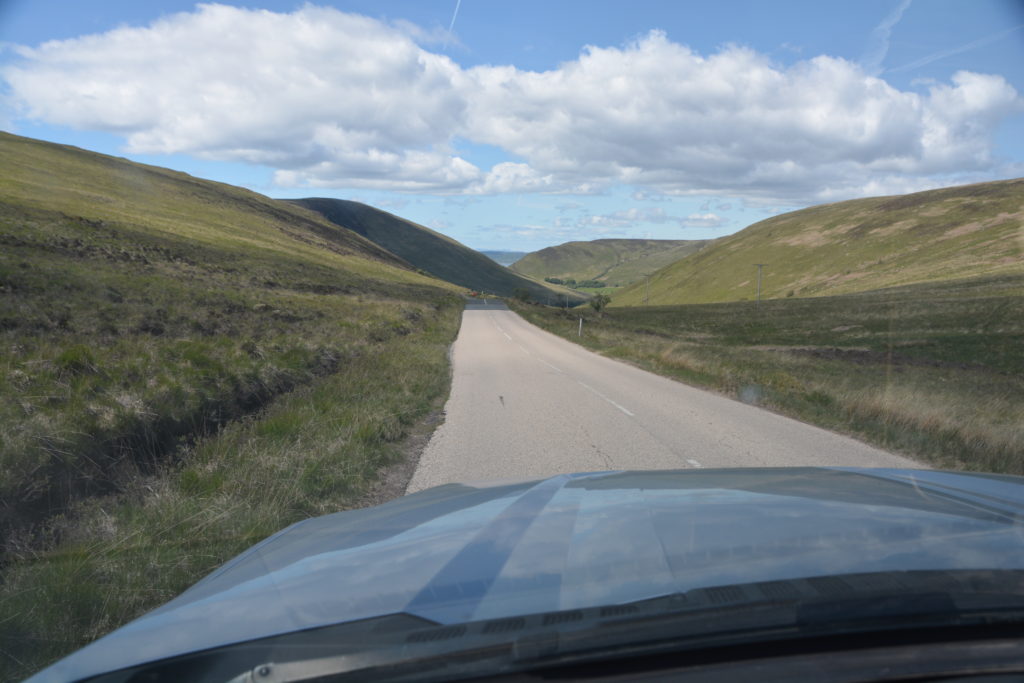
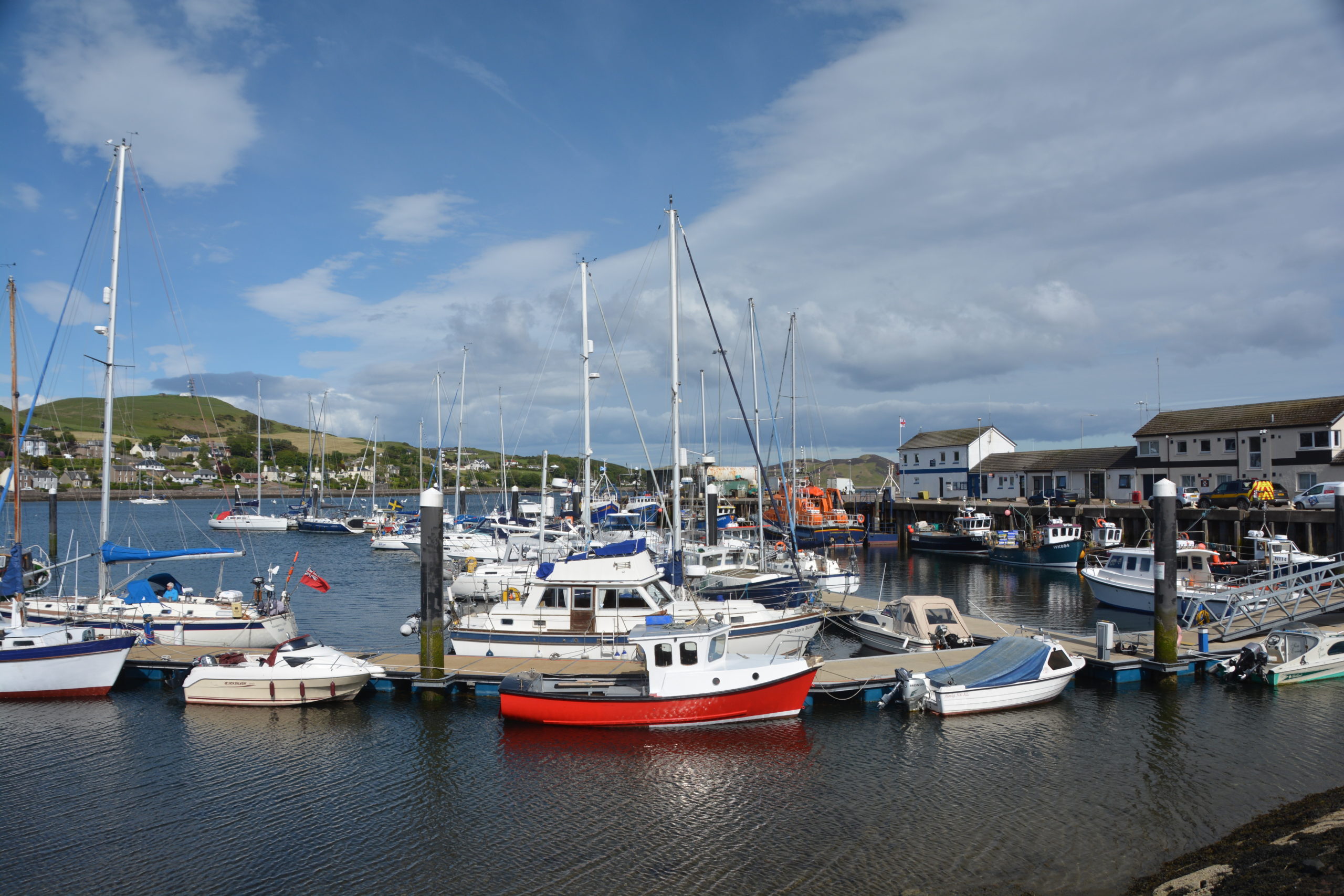
Comments
Straddling the Irish Sea — No Comments
HTML tags allowed in your comment: <a href="" title=""> <abbr title=""> <acronym title=""> <b> <blockquote cite=""> <cite> <code> <del datetime=""> <em> <i> <q cite=""> <s> <strike> <strong>